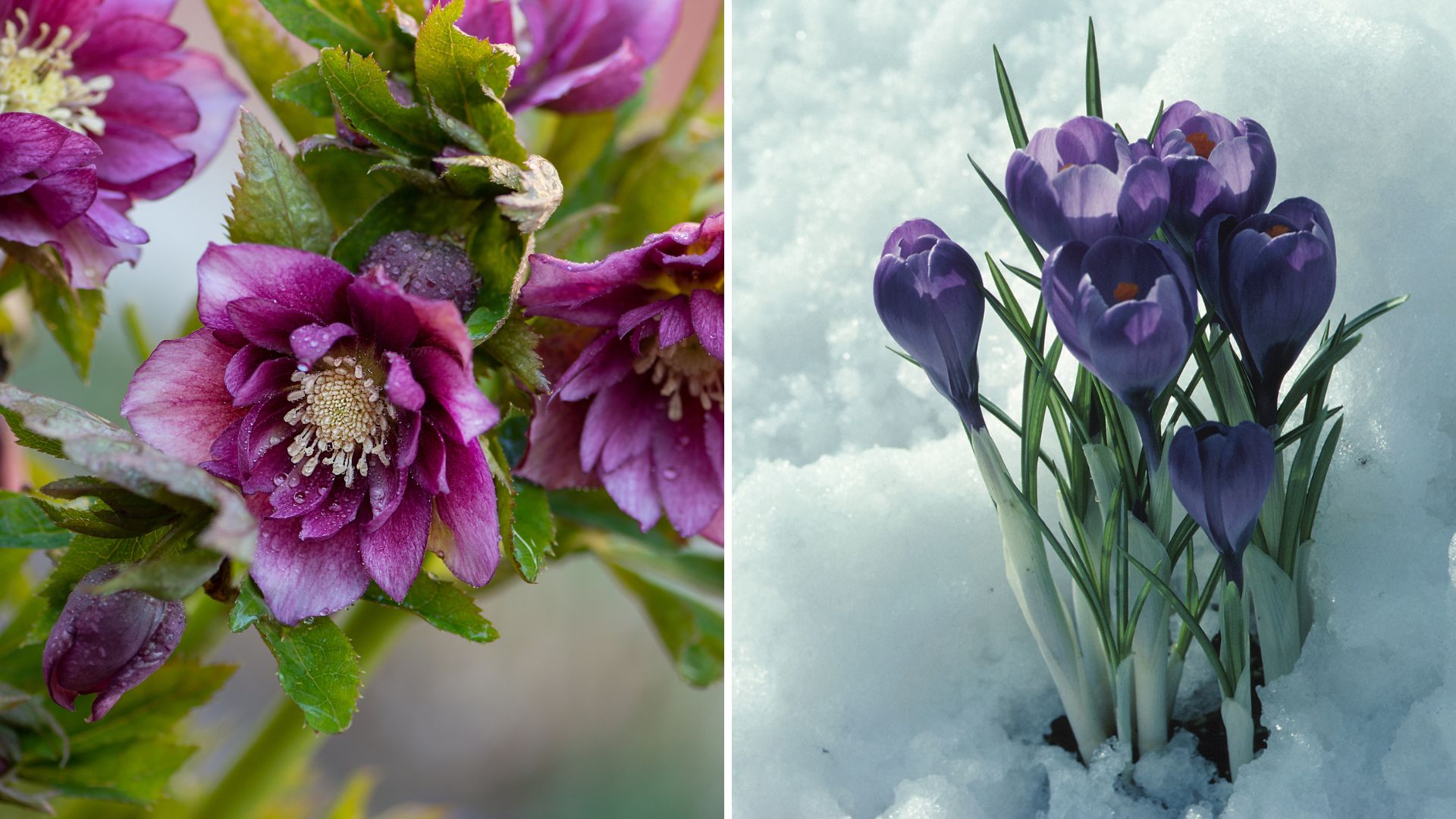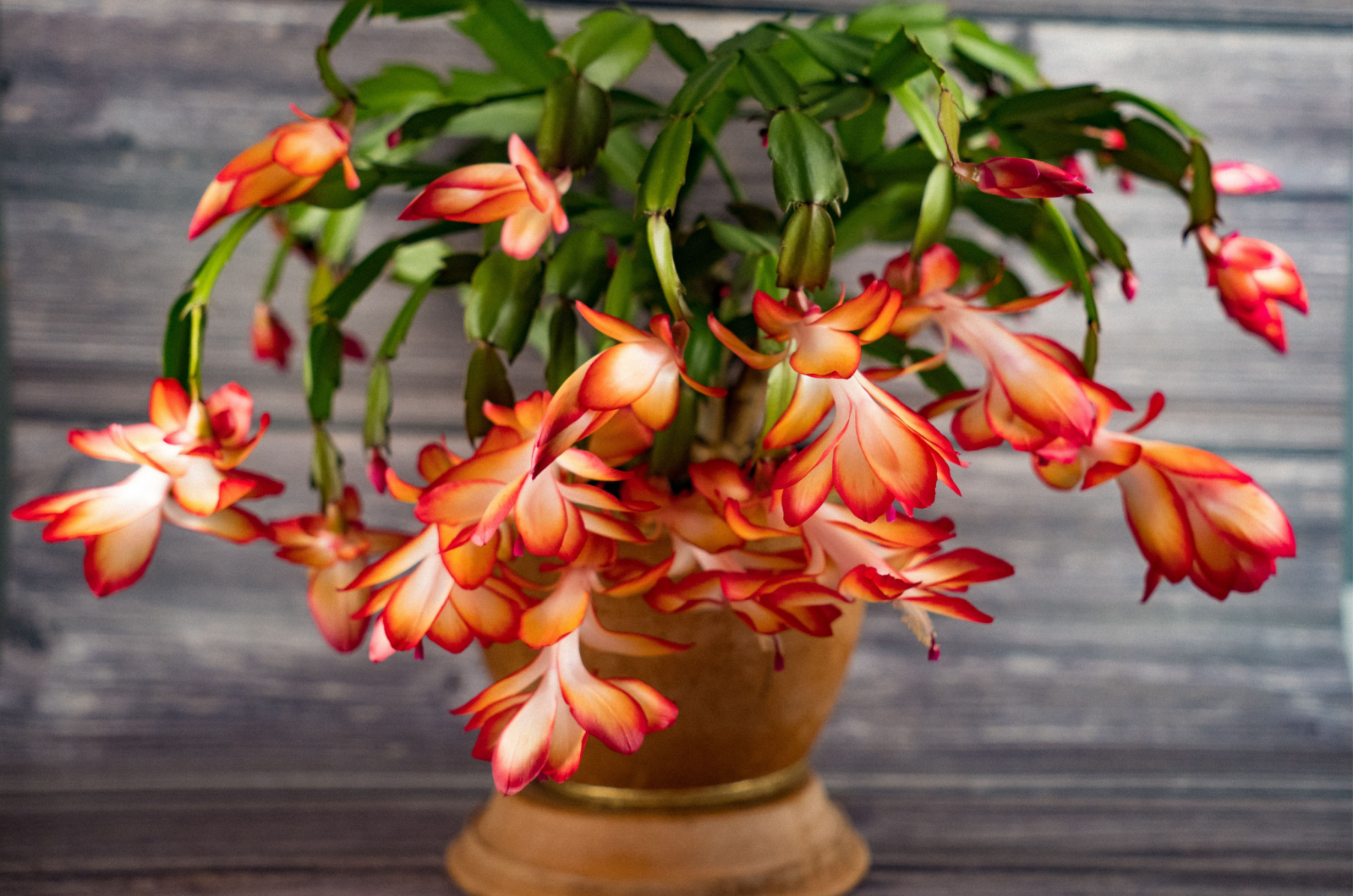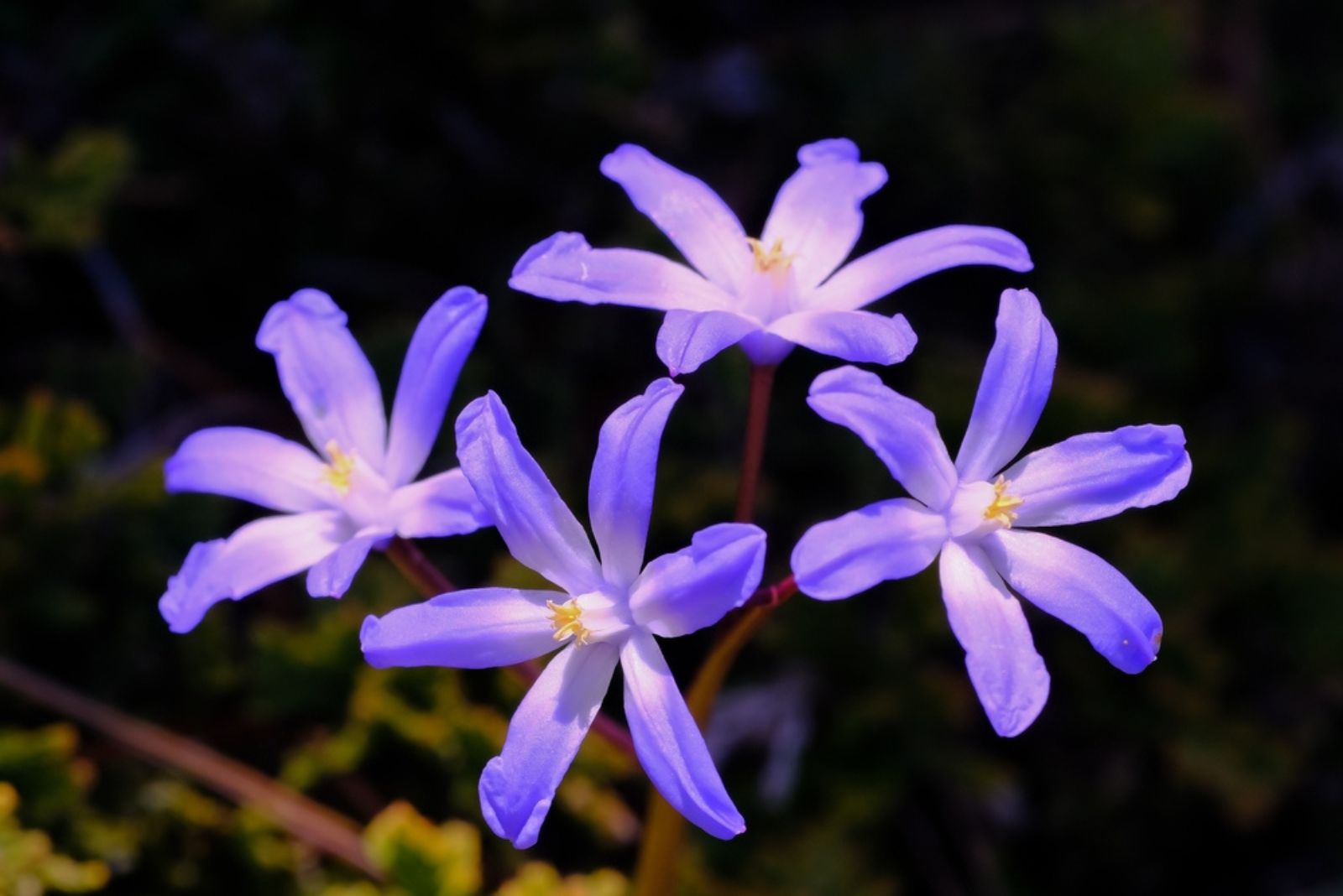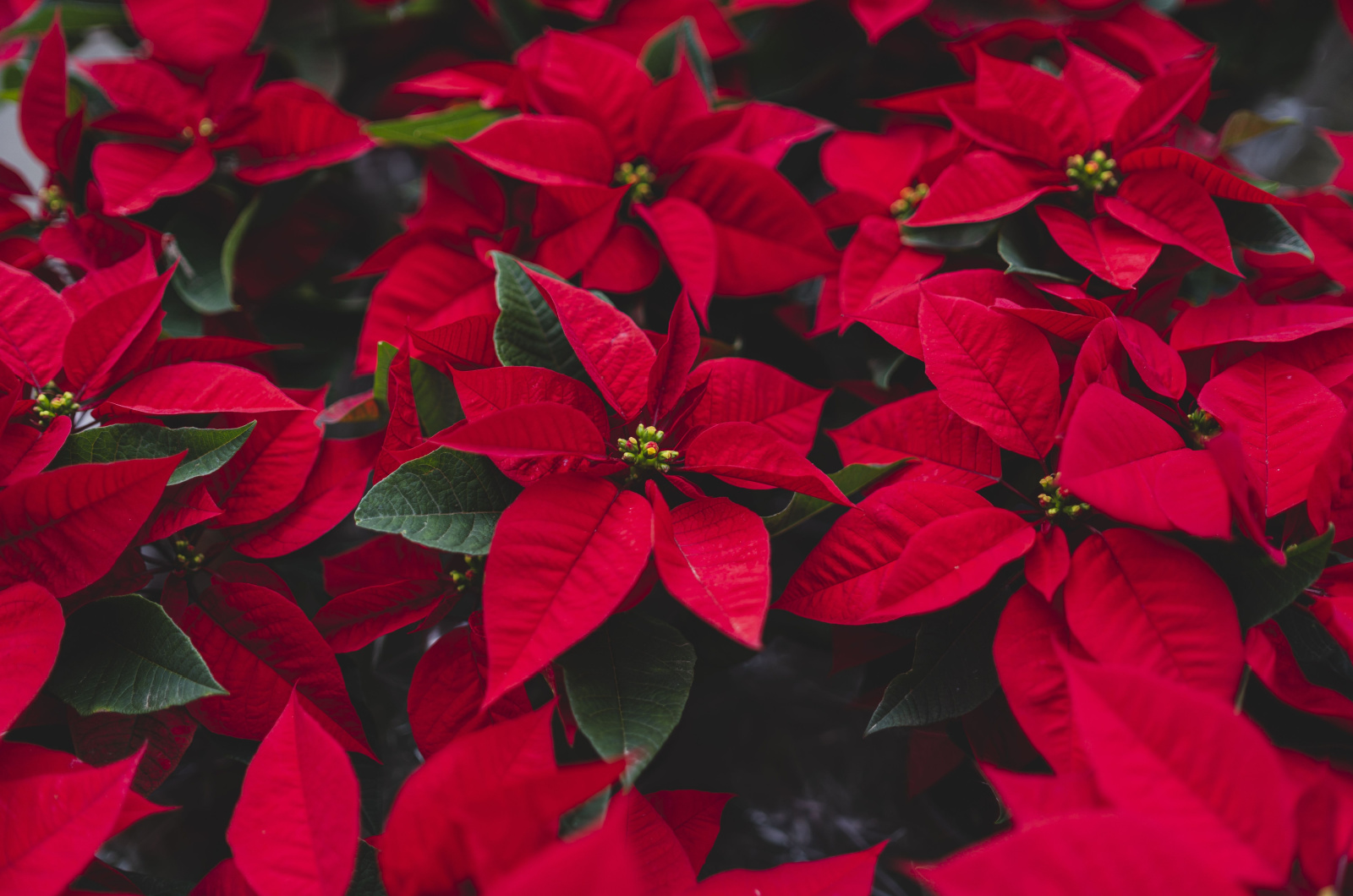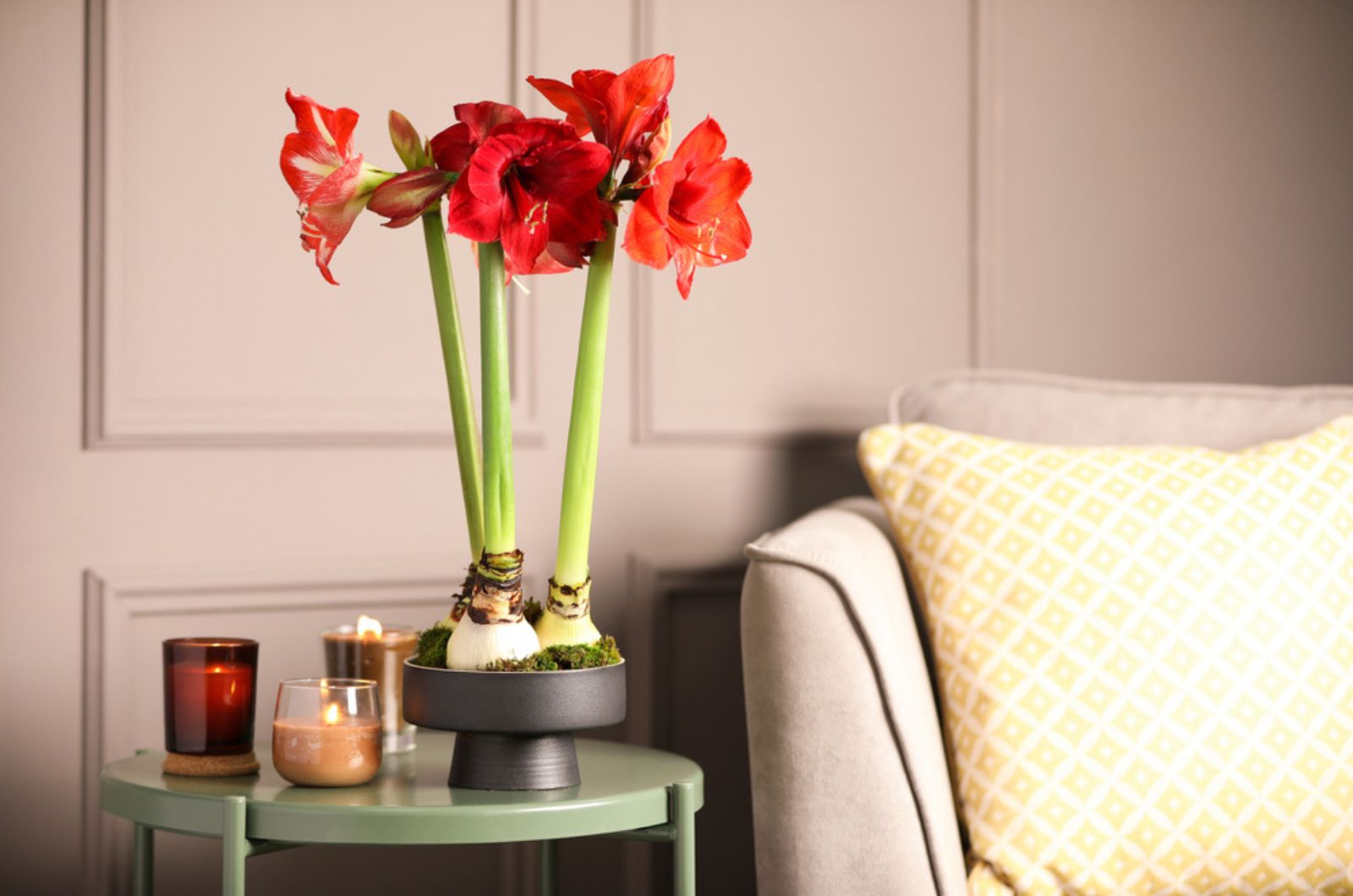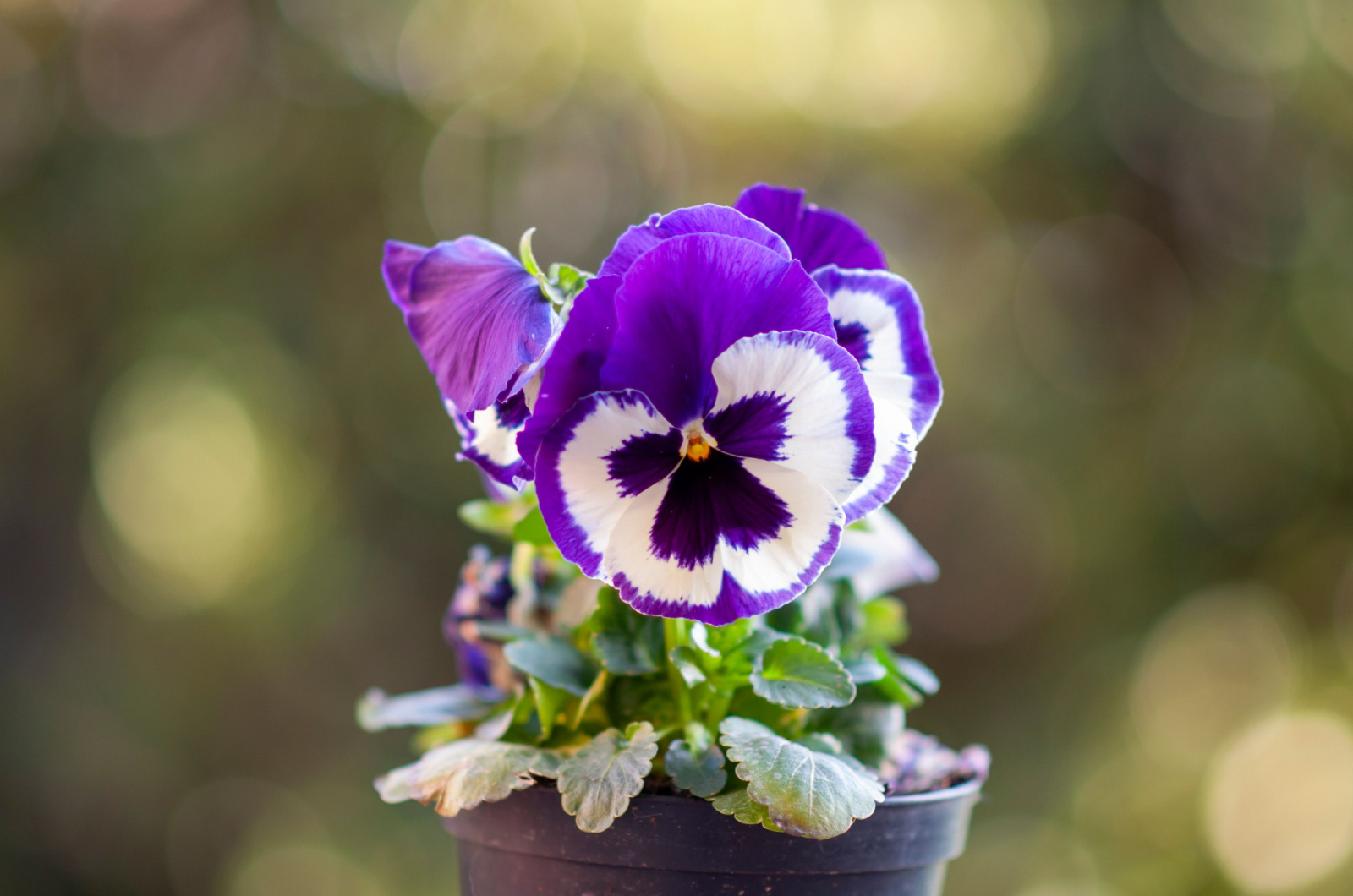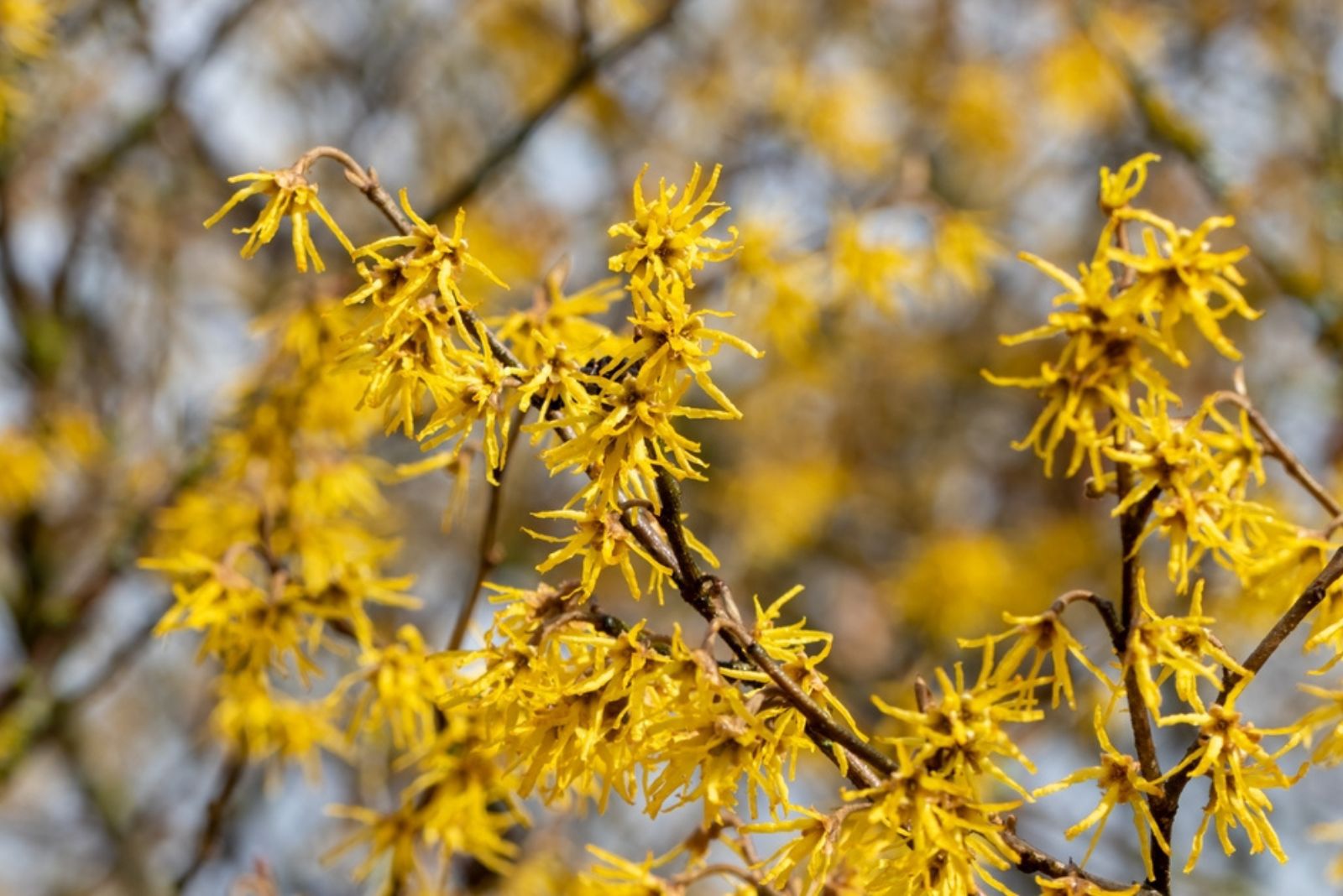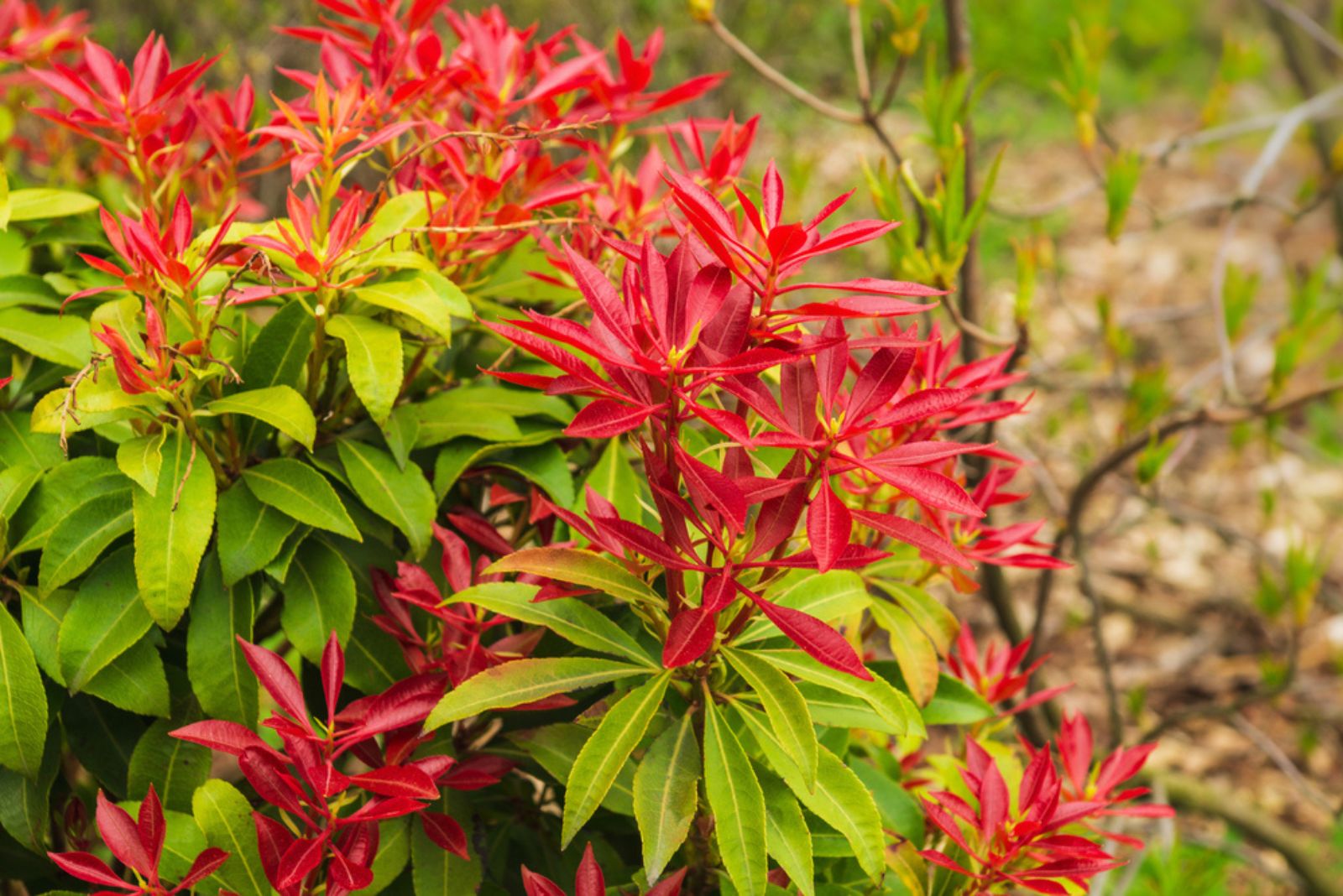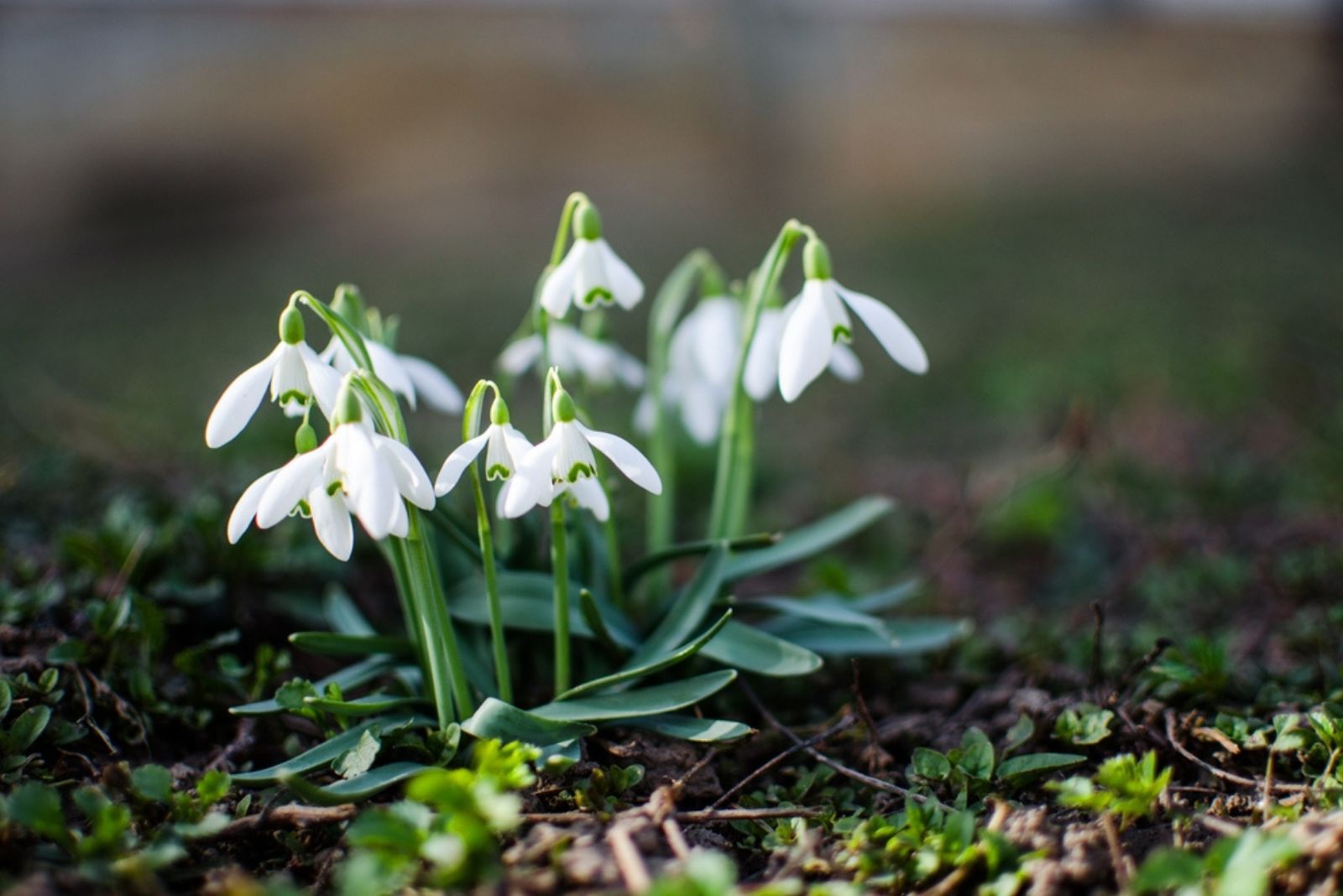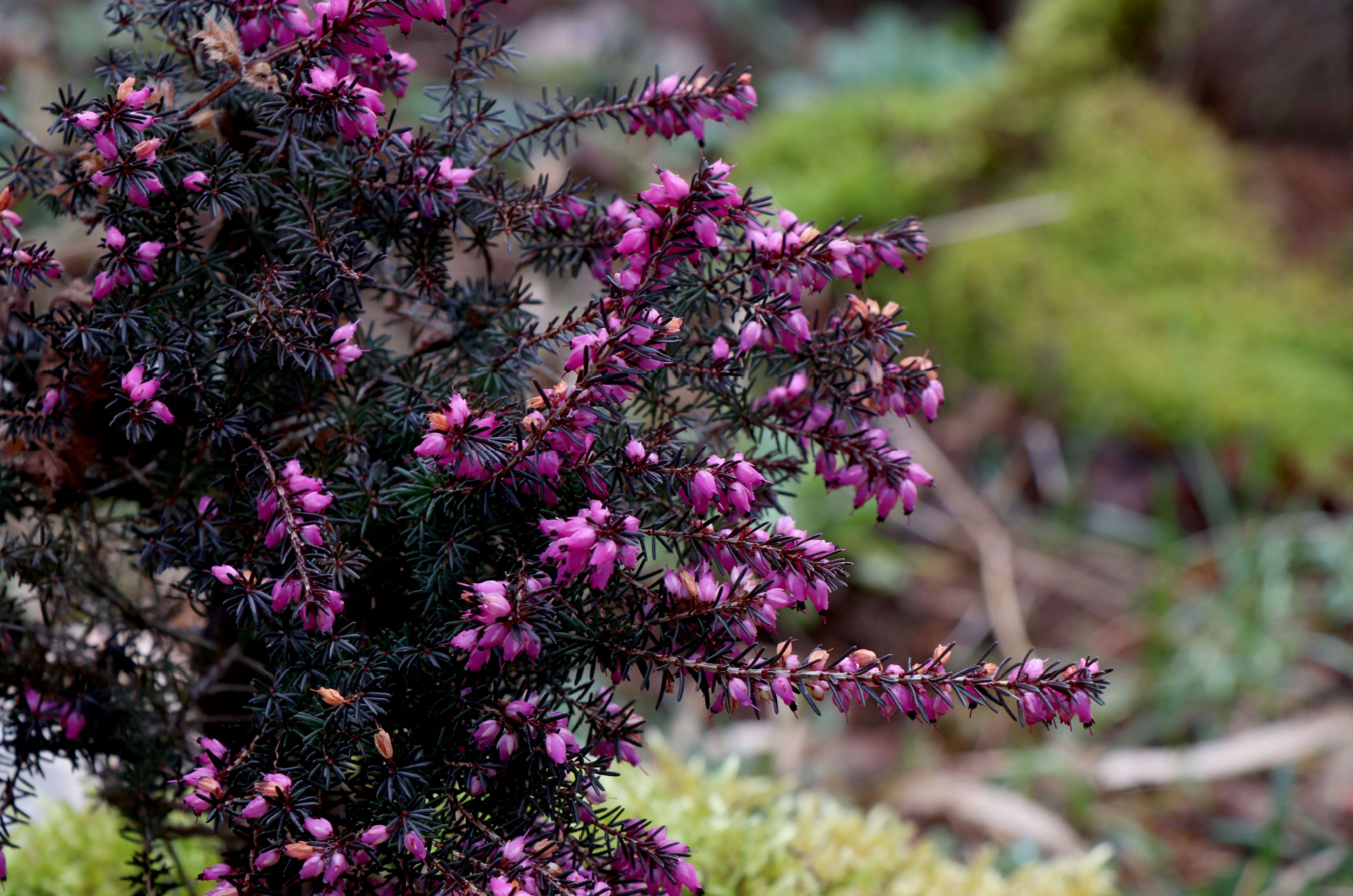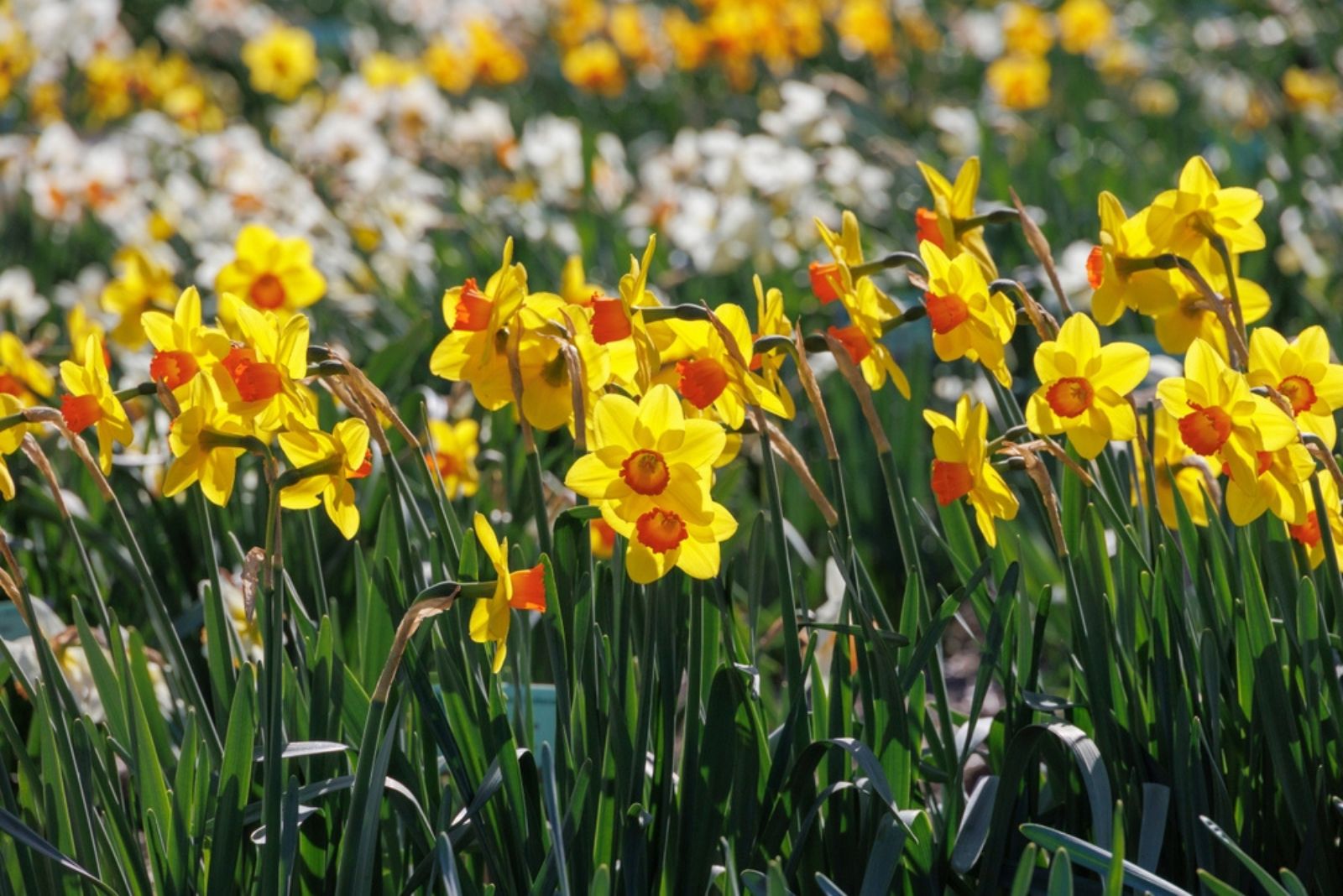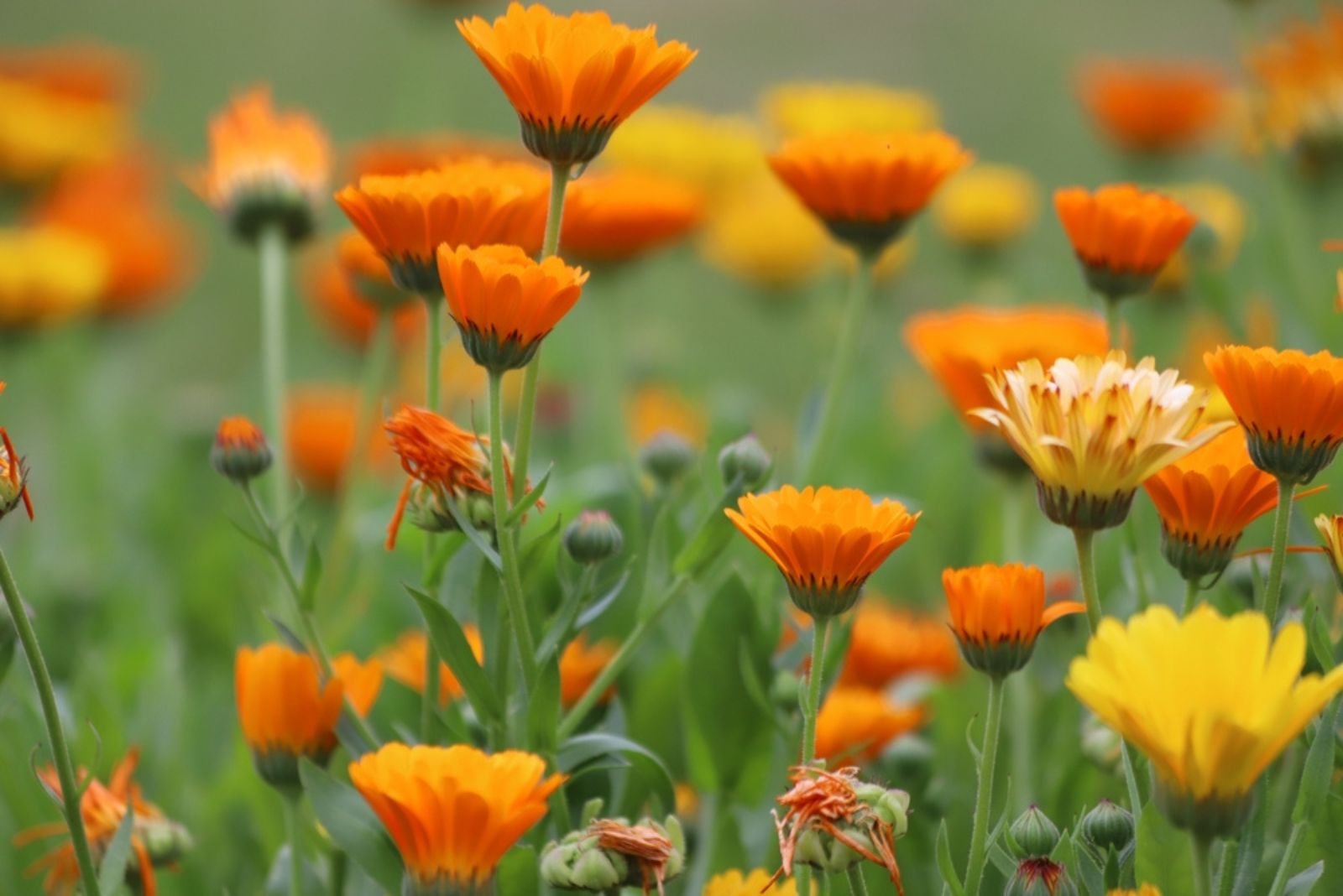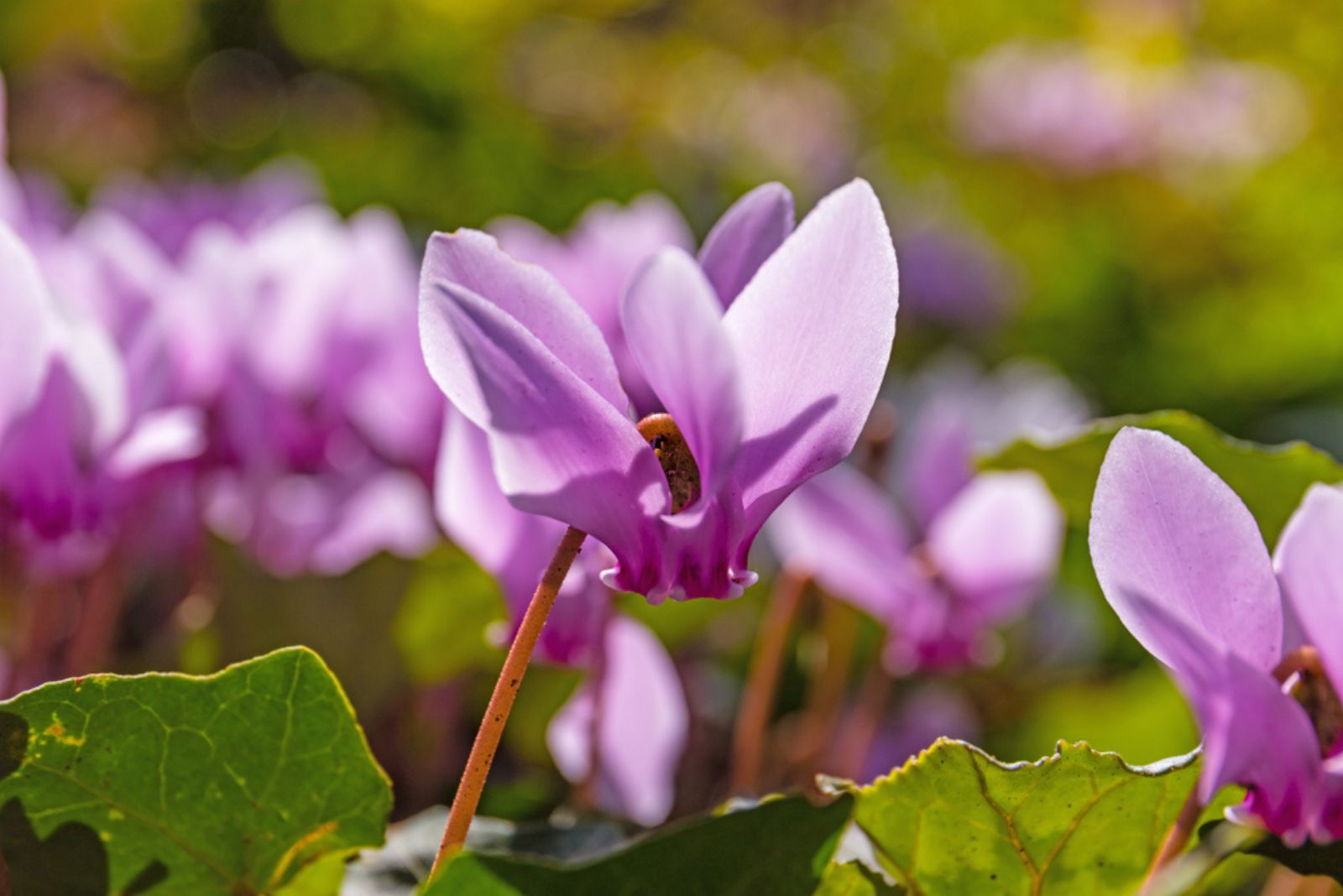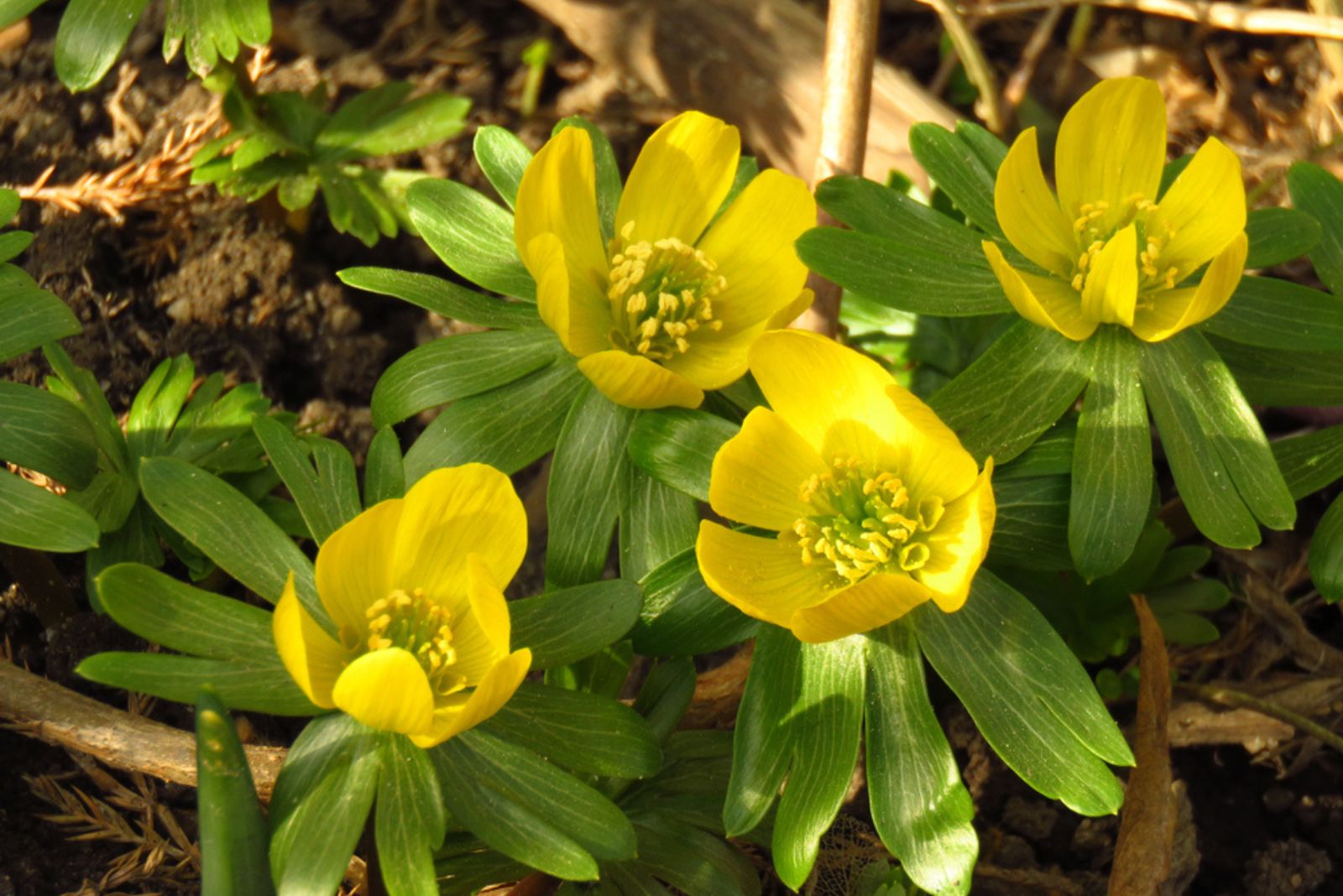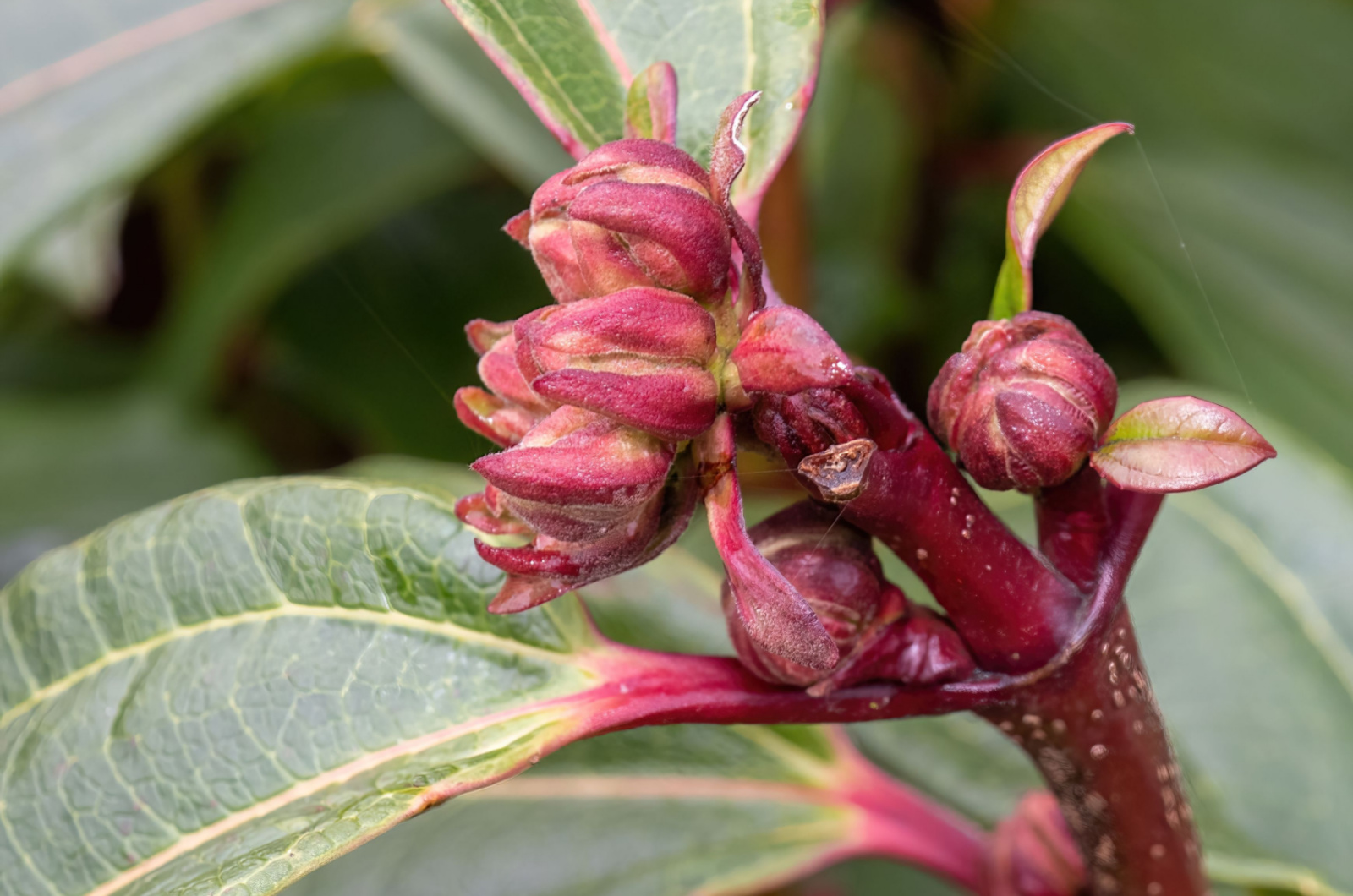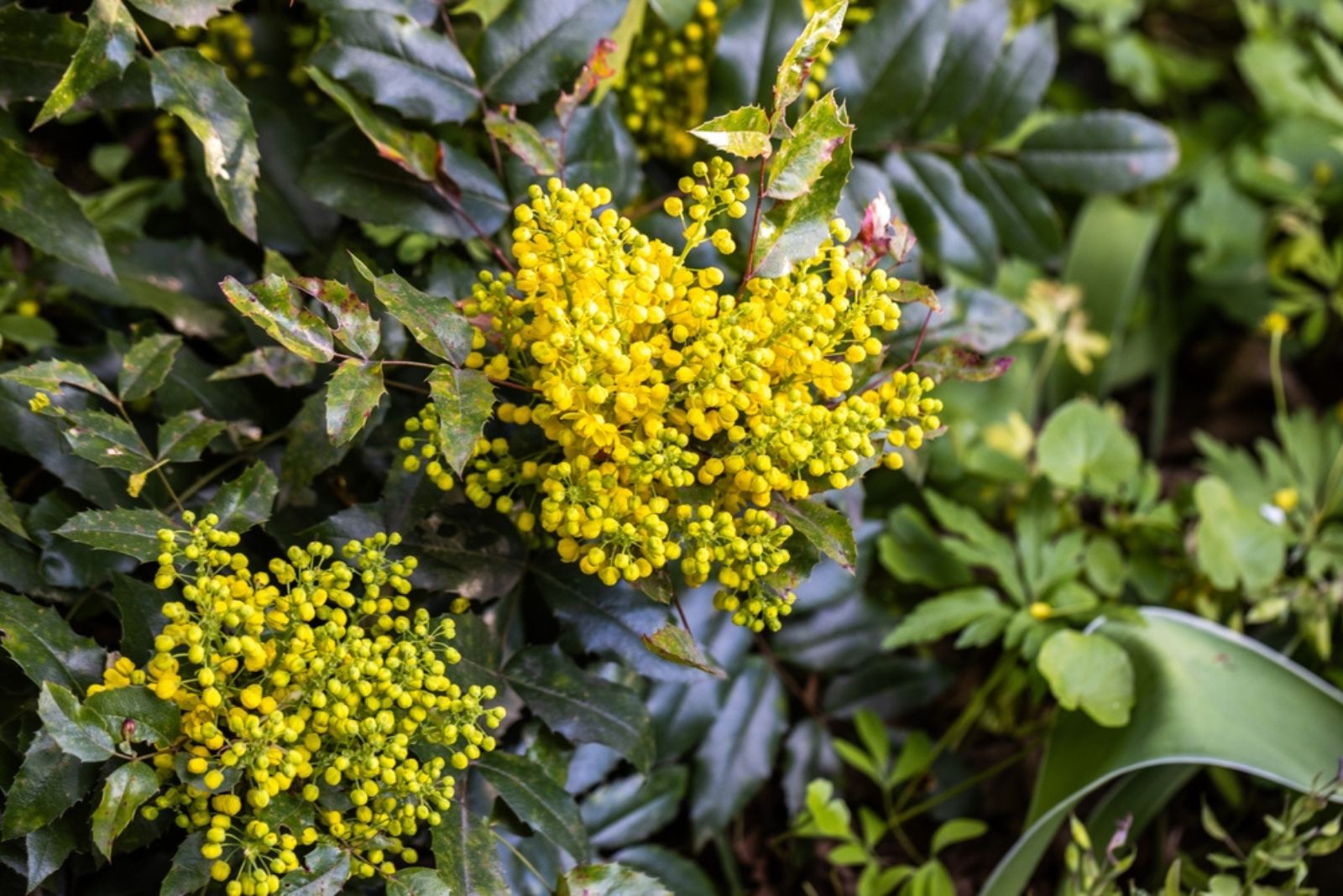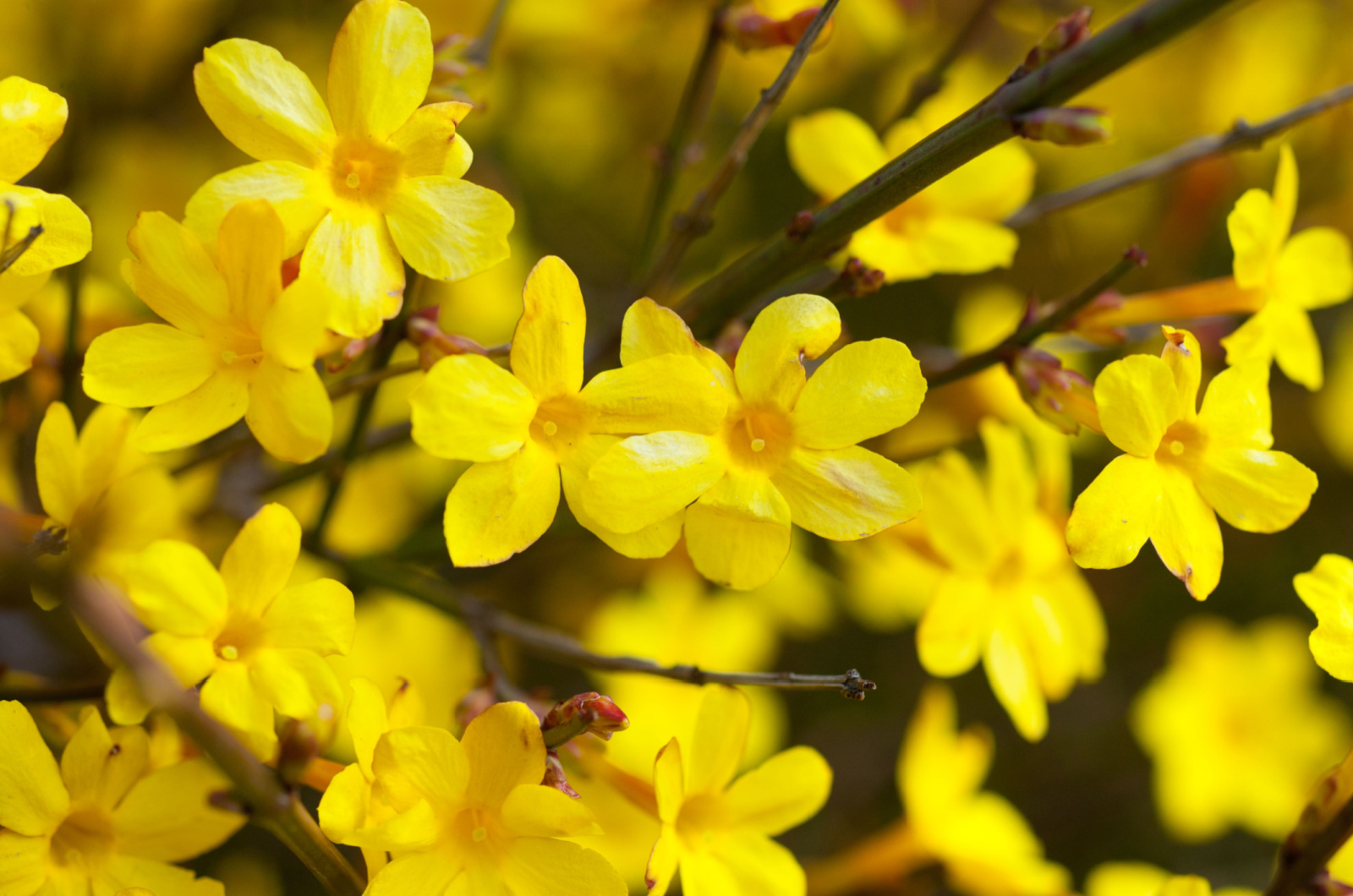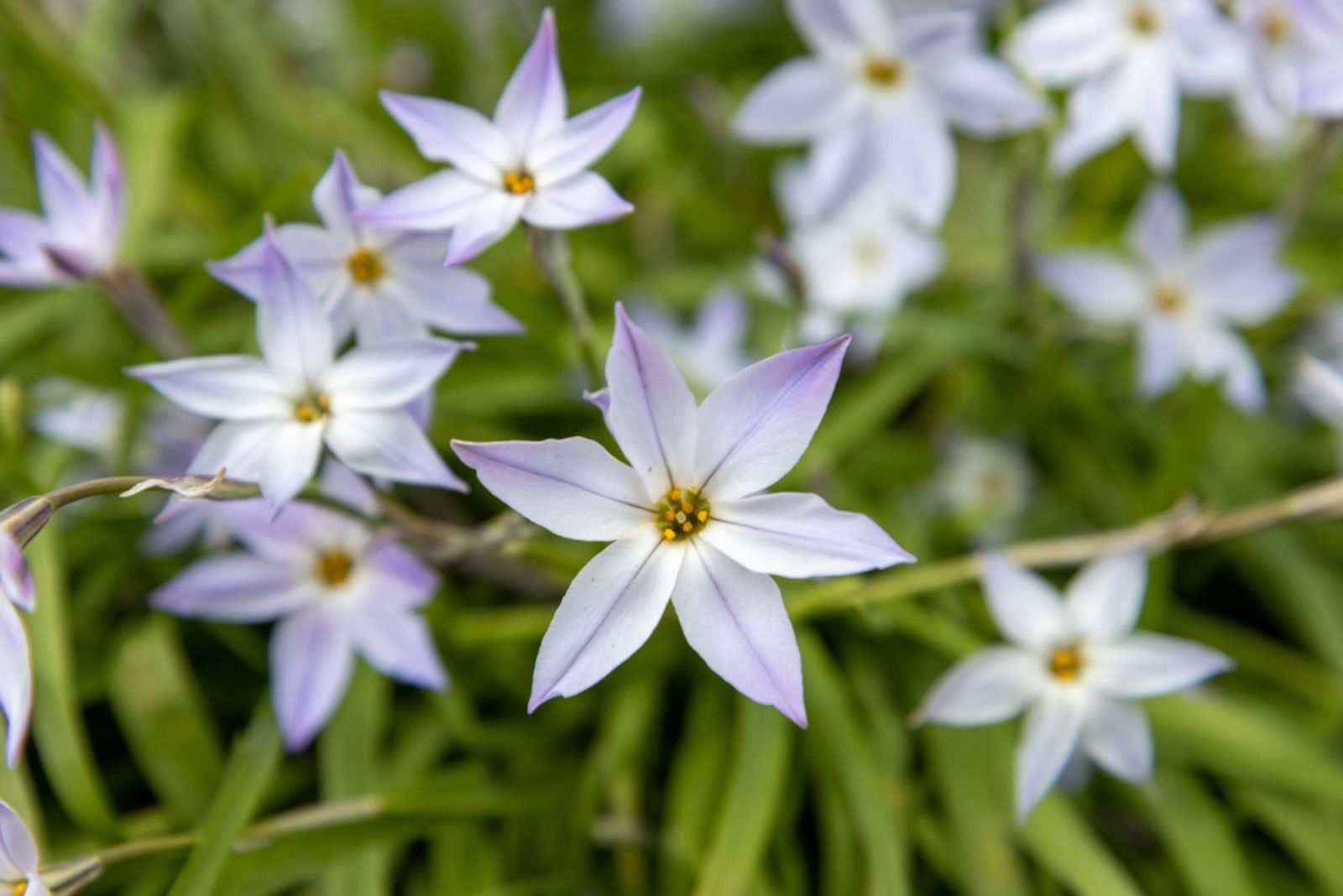Thriving and colorful flower beds are typically linked to the spring and summer months, and many gardeners finish their chores with the arrival of winter.
But it doesn’t have to be this way and you can have a captivating flower display even in winter. How come? Well, there are some breathtaking flowering plants that bloom in winter and will add a special touch of beauty to your outdoor space.
Let’s see!
1. Christmas Cactus
• Zone 9-11
• Bright indirect light
• Up to 12 in. tall, 24 in. wide
My list starts with one of the most popular festive plants, the magnificent Christmas cactus. Even though it can bloom at various times of the year, the blossoms are most frequently seen during December and January.
If you live in USDA zones 9 through 11, you can grow your Christmas cactus outdoors year-round.
However, it performs better indoors if you live in cooler climates, but you can keep it outdoors during warmer months.
2. Lenten Rose
• Zone 4-9
• Full sun to full shade
• Up to 24 in. tall, 30 in. wide
What’s uncommon about this plant is that it’s a part of the Hellebore genus and not related to roses at all. But its beauty can definitely be compared to that of roses.
It displays its gorgeous blooms in late winter during Lent, i.e., the period before Easter in the Christian religion (hence the name).
You can find these rose-like species in various hues and one of their best features is that they’re super easy to maintain.
3. Glory Of The Snow
• Zone 3-8
• Part sun
• Up to 6 in. tall, 2 in. wide
Once you see the first blossoms of the Glory of the Snow plant, you should know that spring is just around the corner. This is one of the earliest blooming species and one of the most famous perennials.
Tiny star-shaped blooms pop up through the snow and they’re blue with white centers. You can spice things up by adding some pink varieties and get a wonderful cluster that will come back year after year.
4. Poinsettia
• Zone 9-11
• Bright indirect light
• Up to 10 ft. tall, 7 ft. wide
This is definitely one of the most popular plants for holiday decor and it’s almost impossible to find a nursery store that doesn’t sell Poinsettias during the Christmas period.
These plants are typically grown in containers and kept indoors but if you live in zones 9 through 11, you can plant them directly in the ground.
Even though red Poinsettia blooms are the most common, you can find species that produce yellow, white, and even variegated blooms.
5. Amaryllis
• Zone 7-10
• Full to part sun
• Up to 2 ft. tall, 12 in. wide
Just like Poinsettias, Amaryllis plants are most commonly seen during the festive season. What makes these plants so popular are their low care requirements.
Once you purchase your Amaryllis, simply put it in a well-lit spot and give it some water from time to time. Yes, it’s that easy!
Once the blooming season ends, you can transfer this plant to your outdoor garden and it will come back every year.
6. Scilla
• Zone 4-8
• Full sun to shade
• Up to 6 in. tall and wide
Beautiful winter-hardy Scilla plants adorn winter gardens worldwide. These are some of the bulbs you can plant in the fall for a stunning winter display.
The great thing about bulbs is that they will multiply every year, which means a lot of new plants for free!
These small plants grow best in full sun, and even though they can produce blossoms when planted in shady spots, they won’t reach their full potential.
7. Viola
• Zone 4-9
• Full to part sun
• Up to 12 in. tall and wide
Here comes a garden classic, the splendid Viola. This plant is renowned for its long blooming season and its ability to reseed in warmer climates.
If you live in cold climates, plant your Violas as soon as the ground thaws and you can have gorgeous annuals.
Squirrels love these old-fashioned flowers, but the good news is that your Violas will quickly recover if some animal feeds on them.
8. Witch Hazel
• Zone 3-8
• Full to part sun
• Up to 20 feet tall and wide
You’ll find Witch Hazel in various cosmetic products, and I’m sure you already know about its many benefits.
It can be a part of your winter garden and it’s actually a common winter-flowering shrub for fall planting.
Witch hazel generates unusual light yellow blossoms that are fragrant and have thin petals.
9. Pieris
• Zone 4-8
• Full to part sun
• Up to 10 ft. tall, 8 ft. wide
Your outdoor space will look absolutely stunning in late winter if you add a Pieris plant. It features lovely large foliage renowned for its spiral pattern on the stems.
Leaves can be red or yellow and blossoms are bell-shaped and come in green or white. Once they fade, you’ll notice the plant produces fruits which will add a special touch of beauty to your garden.
For best results, ensure a partially shaded spot and some protection from high winds.
10. Primrose
• Zone 4-8
• Partial shade
• Up to 20 in. tall and wide
Another blooming species you can add to your winter garden is Primrose. This splendid evergreen generates blossoms that come in various hues, such as red, purple, orange, and white.
Even though these plants are cold-tolerant, they can go dormant if temperatures drop significantly. But don’t worry, your Primroses will be back on track as soon as the weather warms up.
11. Pansies
• Zone 4-10
• Full sun
• Up to 12 in. tall and wide
Remember those cute flowers from Alice in Wonderland? Yes, those are lovely Pansies and they will make an excellent addition to your winter garden.
If you live in warmer climates, you can enjoy the blooms from fall through spring. Those who live in lower USDA zones can expect the first blooms as soon as the spring arrives.
12. Snowdrops
• Zone 3-7
• Part shade
• Up to 10 in. tall, 6 in. wide
Many flowering plants thrive in warmer weather but that’s not the case with captivating snowdrops. They prefer cooler temperatures and will struggle to grow in zones 8 and above.
Snowdrops are an excellent choice for winter gardens for wildlife and they’ll multiply quickly because they generate numerous offsets that develop into clumps.
13. Winter Heath
• Zone 5-7
• Full sun
• Up to 12 in, tall, 18 in. wide
The name says it all! This flowering shrub displays its first blossoms in December and they last through January.
Purple bell-shaped blooms form a dense mat and pollinators adore them. Squirrels, on the other hand, typically don’t come near Winter heath plants.
These plants are super easy to grow and will thrive in sunny spots and loose, acidic soil types.
14. Daffodil
• Zone 3-9
• Full to part sun
• Up to 30 in. tall, 12 in. wide
Daffodils are very common garden plants and the reason gardeners choose them are low care requirements and, of course, their beauty.
You can plant the bulbs in the fall and the plants will be established until March. Fragrant and delicate blossoms come in various colors, including orange, white, and yellow.
15. Calendula
• Zone 9 through 11
• Part sun
• Up to 12 in. tall and wide
There are so many reasons why you should add Calendula to your garden. You can use them to dye cloth, make lovely tea and skin-soothing products, or grow them to attract pollinators.
Calendula will bloom in early winter in cooler climates and, if you live in warmer climates, you can enjoy the blooms all winter long.
Make sure to deadhead your Calendula regularly to extend the blooming season and promote healthy growth,
16. Dutchman’s Breeches
• Zone 3-8
• Full to part sun
• Up to 1 ft. tall and wide
The fern-like foliage and uncommon white blooms of the Dutchman’s breeches plant make it a perfect choice for any garden.
This plant actually generates blossoms in spring but its appearance is breathtaking year-round. It’s not hard to maintain and, once the blooms fade, the plant will go dormant until the weather warms up again.
17. Cyclamen
• Zone 5-8
• Bright indirect light
• Up to 9 in. tall and wide
Cyclamen is one of the winter garden must-haves and you can enjoy their upturned blooms from late fall through winter.
You should be careful when selecting Cyclamen species for your garden and look for the cold-hardy ones. Many species don’t tolerate cooler temperatures and you’ll mainly see them as a part of houseplant collections.
Make sure to plant your Cyclamen in a quick-draining soil type and don’t water them too frequently.
18. Winter Aconite
• Zone 4-7
• Full sun
• Up to 6 in. tall and wide
If you like yellow blossoms, Winter aconites should be your choice. These plants are early bloomers and they grow in woodlands in their native habitat.
Your Winter aconites will form into clumps but you should know that they die back in the summer and return back as soon as the spring arrives.
19. Distylium
• Zone 7-9
• Full to part sun
• Up to 10 ft. tall, 8 ft. wide
Distylium species haven’t been so popular lately, but it seems that things are changing pretty quickly. Once the winter arrives, they’ll reward you with an abundance of tiny red blooms.
Some varieties, such as the Coppertone, generate coppery red foliage, so if your garden needs a color boost, Distylium will do the best job.
One of the best things about this evergreen plant is that it tolerates different soil conditions and isn’t susceptible to pests or diseases.
20. Mahonia
• Zone 6-9
• Full to part sun
• Up to 12 ft. tall, 10 ft. wide
Glossy foliage and showy blooms make Mahonia plants stand out in any garden design. If you meet its basic requirements, it will reward you with numerous yellow blooms in late winter.
Even though this plant tolerates full sun, I highly recommend ensuring some shade for your Mahonia to reach its full potential.
21. Crocus
• Zone 3-8
• Full sun
• Up to 6 in. tall, 3 in. wide
If your garden needs more pollinators, you should grow the Crocus plant. Unlike many other species, this plant requires a cold period before it generates blooms, so make sure to plant it in fall.
Crocuses flourish in well-draining soil types and they spread pretty fast, so your winter garden will look beautiful year after year.
22. Winter Jasmine
• Zone 6-10
• Full to part sun
• Up to 4 ft. tall, 7 ft. wide
Do you need a winter plant for privacy? If so, Winter jasmine is the perfect choice. Yellow blooms will definitely cheer you up even during the dullest winter days.
It doesn’t have the fragrance of classic jasmine plants but the beauty is the same.
If you decide on this flowering plant, inspect it regularly for mealybugs and aphids, and if you notice any, treat your Winter jasmine with insecticidal soap or neem oil solution.
23. Camellia
• Zone 7-10
• Part sun
• Up to 14 ft. tall, 7 ft. wide
Camellias are hardy evergreen shrubs and they’re commonly referred to as Winter roses. They can produce an abundance of blooms during the fall and winter, making them perfect for any landscape design.
Even though most varieties are cold hardy down to USDA zone 7, some can grow healthily in zone 6.
24. Spring Starflower
• Zone 5-11
• Part sun
• Up to 6 in. tall and wide
Spring starflower is an adorable plant that produces star-like periwinkle blooms that fade to white at the center.
Both blooms and foliage are fragrant and not susceptible to pests and diseases, which is excellent news for beginner gardeners.
25. Daphne
• Zone 7-9
• Part sun
• Up to 5 ft. tall and wide
And the last winter-blooming plant on our list is the magnificent Daphne. It generates colorful and fragrant blooms that develop into clusters.
You can enjoy Daphne blossoms in winter, spring, and sometimes even in summer. This species thrives best in partially shaded areas. It grows pretty slow but its appearance is worth every second you spend caring for it!
Your winter garden will look breathtaking with any of these splendid plants, but for best results, I recommend growing more than one!

